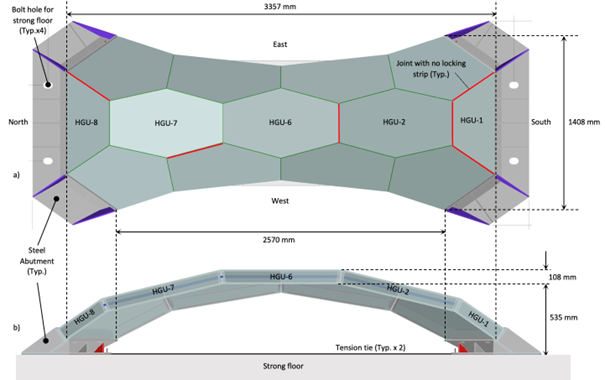Experimental Behavior of a Prototype 3m-Span Modular Glass Pedestrian Bridge
DOI:
https://doi.org/10.47982/cgc.9.620Downloads

Abstract
This research is related to the structural performance of a shell-type system made of hollow glass units (HGU) that utilizes glass as the primary structural material. The efficient structural function of the proposed shell-type system is designed using Polyhedral Graphic Statics to achieve a system geometry that maximizes in-plane compression and limits the presence of tension. The large-scale shell structure is constructed using a modular assembly of individual hollow glass units. To date, the research team has completed studies on individual HGU strength and stiffness, and the performance of the interface material necessary to transmit the high in-plane compression forces between neighboring HGUs. As well, the feasibility of the proposed modular system has also been demonstrated through the successful assembly and disassembly of a 3 m span prototype pedestrian bridge known as Tortuca. Tortuca is comprised of 13 individual interlocking HGUs assembled into a compression-dominant form supported on steel abutments. In the current research study, the physical performance of Tortuca is experimentally investigated under controlled laboratory testing and using an extensive assortment of displacement and strain sensors. Significant findings related to experimental testing of Tortuca will be reported.
Published
Issue
Section
Strength, Stability & Safety
License
Copyright (c) 2024 Joseph Robert Yost, Jorge Huisa Chacon, Yoa Lu, Masoud Akbarzadeh, Damon Bolhassani, Fahimeh Yavartanoo, Phillipp Amir Chhadeh, Jens Schneider

This work is licensed under a Creative Commons Attribution 4.0 International License.



